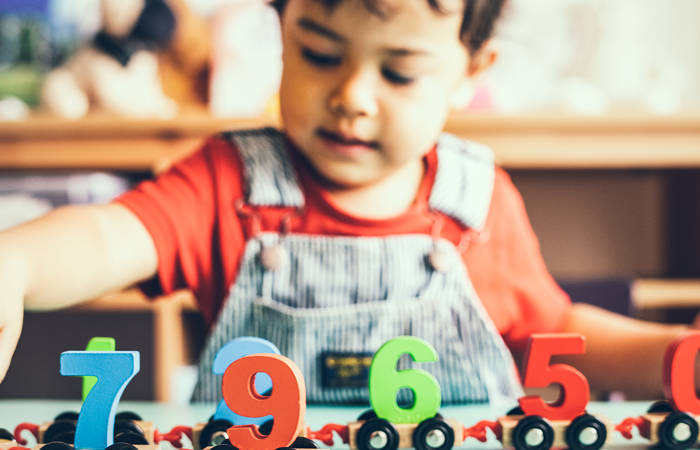Like what you see?
Sign up to receive more free parenting advice.
Thank you for subscribing to our newsletter!
Child Development

Credit: iStock.com/OrbonAlija
As a parent, you want your child to succeed in all aspects of life, and developing a love for reading is no exception. The key to children’s literacy is setting the foundations of oral language, story telling and a love of books.
Compared to our peer countries, Australia is performing above average in literacy. That’s the good news.
The bad news is since 2000, when we first participated in the Programme for International Student Assessment (PISA), our students’ reading levels have been declining. Rapidly.
The most recent results show that on average, Australian students fared well compared to their OECD peers. However, the students on the lower end of reading proficiency are increasing.
In 2000 , around 12 per cent of Australian students were found to have the lowest level of reading proficiency, a level considered “too low to enable them to participate effectively and productively in life”.
That number has grown to almost 20 per cent in 2018. The latest PISA report notes that while Australia has been steadily declining in reading, mathematics and science over the last two decades, more rapid declines have been observed in reading levels among Australia’s lowest-achieving students.
“If we want to turn around these type of results, we need to start when children are young,” says Murdoch Children’s Research Institute Professor Sharon Goldfeld, paediatrician and Director of the Centre for Community Child Health (CCCH) at the Royal Children’s Hospital.
“What we do in those first eight years is fundamental to children’s learning and literacy success.”
She notes that while we don’t know exactly why some of our students are slipping when it comes to reading, we need to consider how to ensure all of our students do well in literacy, but also how do we ensure we are addressing the inequities some families face which impacts their children’s education.
“What we do in those first eight years is fundamental to children’s learning and literacy success.”
What literacy looks like for under fives
While some preschools might start on the very beginnings of sound and letter recognition, for under fives it’s all about setting the foundations. Right from birth.
“Emerging literacy, or the love of reading, starts well before preschool,” says Professor Goldfeld.
The key to literacy is oral language.
“Being able to tell a story is one of the most important skills a child will learn,” she says.
“It’s the beginning of grammar, reading and writing.”
There are two ways to engage children in the oral language and begin their understanding of the concepts of storytelling.
The first is developing a child’s relationship with books through regular exposure.
“Reading to a child doesn’t necessarily mean that parents have to read the words, they can simply talk to the pictures in the book,” Professor Goldfeld says.
“It’s about supporting the child in creating a positive relationship with books.
The second way is engaging children through play.
“Many wouldn’t associate play and literacy, however, play is really important when it comes to reading as it involves oral language and a back-and-forth conversation with a child,” she adds.
She recommends taking the child’s lead on what interests them and then beginning a conversation through play and providing the child an opportunity to respond.
“You can start this even before children can talk back,” explains Professor Goldfeld.
“For example, if a baby is interested in a rattle, you can say, ‘Look at this rattle’, and while they may not verbally respond, they might shake the rattle as a response.”
“Later on, when their language develops, you can advance the language by naming the colour of the object or talking about what the object does and then following on into imaginative play as they age, which is when storytelling really kicks off.”
The benefits of foundational literacy
Children most commonly learn to read in the early years of primary school, and while they begin to understand that the shapes on a page correlate to a sound in the year before formal school, Professor Goldfeld says for children who learn to read before the age of five, it doesn’t necessarily equate to academic success.
Instead, it is far more about those foundational elements of oral language, storytelling and a love of books.
“Generally speaking, children who like books and who have good oral language will do better at school even if they have other learning difficulties,” she explains.
“The first five years are about developing a positive relationship with the written word and developing their language through play, which will then eventually lead to being able to read.”
For school-aged children with reading difficulties, she recommends early identification and early intervention to ensure a child’s enjoyment and success in school.
While many see digital technology as a potential threat to literacy, Professor Goldfeld says that technology can provide children with literacy difficulties an opportunity to still engage in reading.
“For children who find the written word a struggle, technology provides children with another way to tell a story, for example through dictation, or they can listen to a book instead of read it,” she explains.
“It’s all about using digital technology to ensure children still feel engaged and valued in the learning environment, coupled with early intervention.”
Strategies for parents
In a 2015 study by the Australian Institute of Family Studies (AIFS), the authors found that parents who read to their two to three year old everyday had on average higher Year 3 NAPLAN reading scores, compared to parents who read to their child less frequently.
Professor Goldfeld agrees and recommends parents create regular, at least once a day, positive experiences with books.
“It can start from birth, having a baby in your lap, feeling warm and loved while looking at a book, it doesn’t matter whether the parents are reading the words or talking to the pictures, it’s about the child’s general experience,” she says.
For parents who themselves don’t have an engaged relationship with reading and books, Professor Goldfeld recommends singing to and with their child.
“Literacy isn’t only about reading, it’s also about telling stories and that can be done through singing a song,” she adds.
Another strategy is simply talking to children about what parents are doing, whether that is having the child watch the parent make dinner while the parent explains what they are doing, or the parent discussing with the child what they are doing, seeing and hearing during a supermarket shop.
The AIFS study notes that ‘enrichment experiences’, such as visiting the museum or zoo, were found to be an important aspect of the home learning environment as it promotes children’s literacy as they, “positively influence children’s interest in learning and information processing”.
“The most challenging aspect of the home learning environment is for parents to find the time to create these experiences, memories and traditions,” adds Professor Goldfeld.
“It takes time to build a positive relationship with books and language.
“So, embedding these experiences into your everyday can be really useful.”







